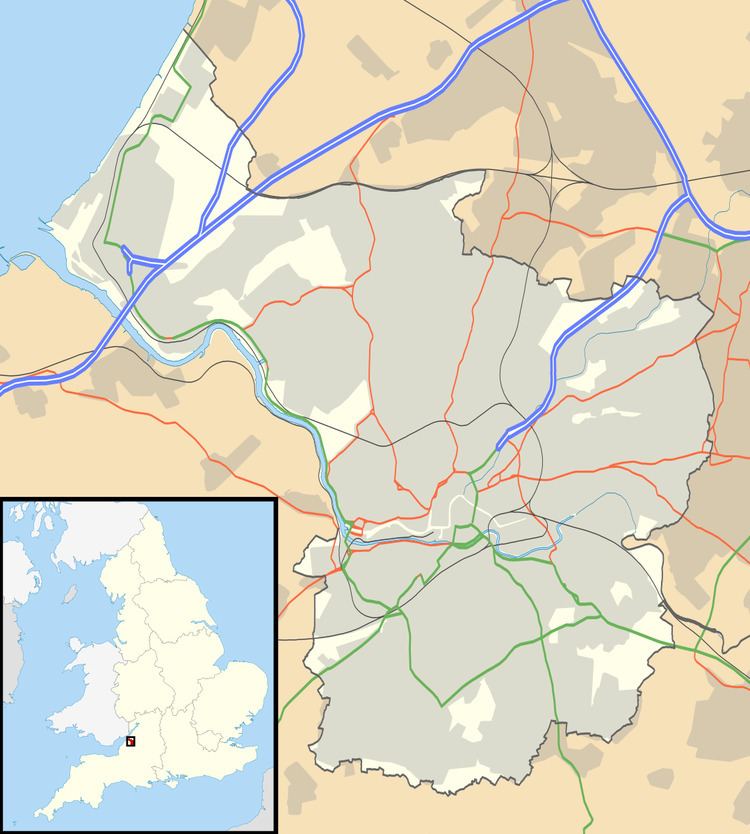Phone +44 117 971 9117 | ||
 | ||
Address West Lodge, Bath Rd, Bristol BS4 3EW, UK Hours Closed now Wednesday10AM–4PMThursday10AM–4PMFriday10AM–4PMSaturday10AM–4PMSunday10AM–4PMMonday10AM–4PMTuesday10AM–4PM Similar Arnos Manor Hotel, South Bristol Crematori, Paintworks Event Space, Avonview Cemetery, M Shed Profiles | ||
Walk through arnos vale cemetery bath road bristol england
Arnos Vale Cemetery (grid reference ST606716) (also written Arno's Vale Cemetery), located in Arnos Vale, Bristol, England, was established in 1837. Its first burial was in 1839. The cemetery followed a joint-stock model, funded by shareholders. It was laid out as an Arcadian landscape with buildings by Charles Underwood. It is listed, Grade II*, on the Register of Historic Parks and Gardens of special historic interest in England.
Contents
- Walk through arnos vale cemetery bath road bristol england
- Short documentary arnos vale cemetery 2006
- Notable people buried at Arnos Vale
- Chhatri of Raja Rammohun Roy
- War Graves
- Archives
- References
Arnos Vale cemetery is located on the road from Bristol to Bath (A4). The cemetery is located just before Edward Road and Brislington, about a mile from Temple Meads railway station and about 2 miles from Bristol bus station.
The cemetery includes a number of listed buildings and monuments, including the Grade II* listed Church of England Mortuary Chapel, Nonconformist Mortuary Chapel, and entrance lodges and gates and screen walls to main entrance.
During the 20th century the cemetery fell into disrepair, and local groups began campaigning for its restoration. In 2003 it was featured on the BBC programme Restoration. The cemetery was a South West region runner-up and has since received a £4.8 million Heritage Lottery Fund grant. The cemetery is undergoing restoration, however the Mortuary Chapel, Entrance Lodges and Gates and Nonconformist Mortuary Chapel remain on the English Heritage Heritage at Risk Register.
Short documentary arnos vale cemetery 2006
Notable people buried at Arnos Vale
Chhatri of Raja Rammohun Roy
The reformer Raja Rammohun Roy (22 May 1772 – 27 September 1833) died at Bristol on 27 September 1833 and was first buried at Stapleton, but was reinterred in 1843 in the newly laid out Arnos Vale cemetery under the mausoleum designed by William Prinsep, which is a copy of a Bengali tomb or chhatri (literally meaning umbrella). According to information available at the cemetery, a commemoration is held annually at this chhatri, attended by Unitarians, Bristol's Lord Mayor and the Indian High Commissioner plus Indians and British who remember with gratitude the works of the "Founder of Modern India".
A previously missing (and unknown) exquisite miniature ivory portrait bust of Raja Rammohun Roy was unveiled at the annual commemoration of the death of the Indian religious, social, and educational reformer, and humanitarian, at Arnos Vale cemetery in Bristol, on 22 September 2013. Rammohun Roy challenged traditional Hindu culture and indicated the lines of progress for Indian society under British rule. The ivory portrait bust of Rammohun Roy made in London in 1832 by the famous ivory carver Benjamin Cheverton (1796-1876), is based on a bust made around the same time by the gifted sculptor George Clarke (1796-1842). The bust is exceptional because Rammohun Roy gave sittings to Clarke (the only time he did this for a sculptor) to enable the bust to be modelled, and Cheverton copied the bust in ivory for George Clarke, who lent his model to Cheverton to enable this to be done. The process employed by Cheverton to make the copy means that it is identical with Clarke’s bust, save that it is on a reduced scale. Clarke’s bust is missing, and this small ivory bust is the finest three-dimensional representation of Rammohun Roy that exists, since it reflects exactly what was observed when the great man sat to Clarke to have his bust modelled.
War Graves
More than 500 British Commonwealth servicemen and women from both World Wars commemorated by the Commonwealth War Graves Commission (CWGC) are buried or listed at the cemetery, mostly from military hospitals of the area. Most of the 356 servicemen from World War I are buried in the 'Soldiers Corner' plot near the main entrance. Special memorials commemorate one casualty whose grave could not be located and another buried at Bedminster Church Cemetery whose grave could not be maintained. There are 149 servicemen and women from World War II buried here, all in scattered graves apart from a group in a plot in the upper part of the cemetery who were from the Naval Hospital in Barrow Gurney. Those whose graves are not marked by headstones are listed on four bronze panels on a Screen Wall memorial. Nearly 70,000 casualties from the Western Front were brought to Bristol on trains and in hospital ships, "and the relatively small number of servicemen buried in Bristol indicates that, once a wounded serviceman reached England, his chances of survival were quite good".
The memorial, designed by W H Watkins, commissioned by the British Red Cross Society and paid for by public subscription, was unveiled Emily, Duchess of Beaufort and dedicated by the Bishop of Bristol, the Right Rev George Nickson on 21 October 1921. It consists of a central gallery of five arches (with the four bronze panels on the wall directly behind the two pairs of arches either side of the central arch) and two flanking walls. On which are carved the inscriptions:
Archives
Burial registers are held by the Arnos Vale Cemetery Trust. Records of the Friends of Arnos Vale Cemetery are held at Bristol Archives (Ref. 45068) (online catalogue).
